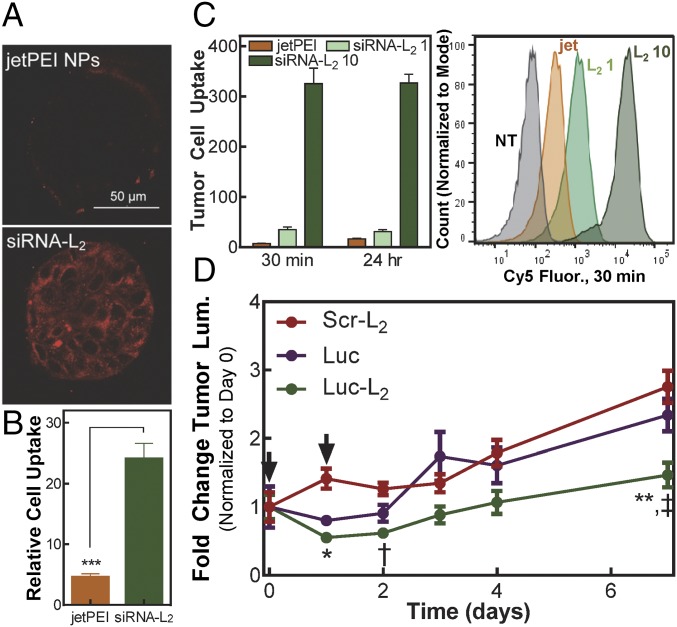Fig. 4.
siRNA-L2 penetrates tumors and is internalized by tumor cells, resulting in sustained gene silencing in a mouse tumor model. (A) Representative confocal microscopy images of tumor spheroid penetration and internalization. (B) Cellular internalization of Cy5-labeled siRNA-L2 or jetPEI NPs loaded with Cy5 siRNA in MCF-7 tumor spheroids, normalized to no treatment. Treatment at 100 nM, quantified by flow cytometry; n = 3, SE plotted, ***P < 0.001. (C) Cellular internalization in tumor cells isolated from orthotopic xenograft mouse tumors after injection of jetPEI NPs at 1 mg/kg or siRNA-L2 at 1, 10 mg/kg, normalized to no treatment; n = 6–8 tumors. (D) Gene silencing of luciferase-targeted siRNA-L2 compared with unmodified siRNA in an orthotopic xenograft mouse tumor model; treatment at day 0 and 1 (as indicated by arrows) at 10 mg/kg, n = 10. *P < 0.05, **P < 0.01: luc-L2 vs. scr-L2, †P < 0.05, ‡P < 0.01: luc-L2 vs. luc. SE plotted.

